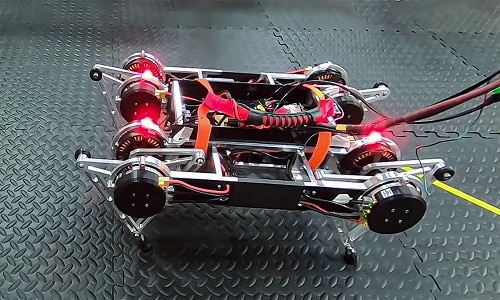Automation is gradually becoming a part of our everyday life. With new technological enhancements, the operational quality of automated machines such as robots may not even require any human mediation at all, as proven by a robot, which is programmed to pick itself up after falling and continue walking on its pathway.

Robots are adept at carrying out pretty much any task that a human would find unsafe, time consuming or monotonous. Thanks to Artificial Intelligence (AI) and Machine Learning (ML), robots can now learn and self-train to get accustomed to challenging external circumstances. But what happens if a robot collapses? Can it also train itself to get up or is external help required?
After intense research and development, a team comprising of researchers from Google, Georgia Institute of Technology and UC Berkeley have achieved a breakthrough in creating a robot which can effectively navigate its path without any human intervention.
Unlike Reinforcement Learning (RL) wherein machines learn by the trial-and-error method, an efficient algorithm based on Deep Reinforcement Learning, was created that enabled the robot to learn to walk on its own – without any human intervention.
Quick learning
This algorithm was fed into a four-legged and the result was surprising. Just as a newly born animal learns to move its limb and explore the physical environment, the robot after processing the raw data from its surroundings learned to walk albeit being a bit unstable. The robot was also able to quickly adapt to environments, like inclines, steps, and flat terrain with obstacles.
After a couple of hours, the four-legged robot was capable of reliably walking across a variety of difficult terrain types without failure. This allowed the researchers to remotely take control of the walking robot.
Less probability of damages
Automated machines will now be able to navigate through difficult terrain without much difficulty. This is particularly beneficial for robots who have been deployed in the armed forces or bomb disposal squad. To do their job effectively, often they have to go through harsh and rugged territories, which results in them stumbling across an obstacle. With the help of this technology, robots can now prevent themselves from any sort of damage.
Scope for further expansion
The researchers hope to implement this algorithm to different robots working in a similar environment. So, besides military applications, robots employed in an industrial or other commercial setting are set to soon prosper.
Read here for more.







